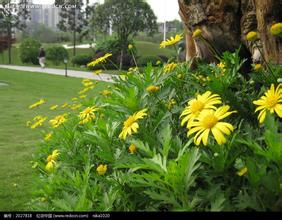Crystallization-Study of Deuteronomy
Message Three
The Goodness of the Land—Its Food
Opening Word of the Prophesying Meeting
Reading the verses in each day.
Reading the main points in the outlines.
Pray-reading the verses:
Col. 1:12 Giving thanks to the Father, who has qualified you for a share of the allotted portion of the saints in the light.
Deut. 8:7-8 For Jehovah your God is bringing you to a good land, a land of waterbrooks, of springs and of fountains, flowing forth in valleys and in mountains; a land of wheat and barley and vines and fig trees and pomegranates; a land of olive trees with oil and honey
Word of Appetizer
The good land is a land flowing with milk and honey. Can you tell to which life the milk and the honey belong? Do they belong to the animal life or to the vegetable life?
The purpose of God’s calling is to bring God’s chosen people into the enjoyment of the all-inclusive Christ, typified by the good land flowing with milk and honey. Milk and honey, which are the mingling of both the animal life and the vegetable life, are two aspects of the life of Christ—the redeeming aspect and the generating aspect.
Spiritual Burden
The purpose of God’s calling is to bring God’s chosen people into the enjoyment of the all-inclusive Christ, typified by the good land flowing with milk and honey.
Because we are practically joined to Christ as the reality of the good land and are enjoying His riches…, God’s eyes are upon us continually, causing us to enjoy God’s presence and making us the object of His care.
Concluding Word of the Prophesying Meeting
The Revelation of the Truth
Christ, as the preeminent and all-inclusive One, is the allotted portion of the saints
The purpose of God’s calling is to bring god’s chosen people into the enjoyment of the all-inclusive Christ, typified by the good land flowing with milk and honey.
The good land is a land of wheat, typifying the limited Jesus, the One who was incarnated, crucified, and buried
The good land is a land of barley, typifying the resurrected Christ
The good land is a land of vines, typifying the sacrificing Christ, the Christ who sacrificed everything of Himself, and out of His sacrifice He produced a new wine to cheer God and man
The good land is a land of fig trees, signifying the sweetness and satisfaction of Christ as our supply.
The good land is a land of pomegranates, typifying the fullness of life, the abundance and beauty of life, and the expression of the riches of life.
The good land is a land of olive trees, typifying Christ as the One who was filled and anointed with the Spirit.
The Experience of Life
If we contact the Lord, we will experience Him as a grain of wheat, and in Him we will be content with our situation; the more we love Him, the more we will be in Him to such an extent that He becomes our prison where we can enjoy Him to the uttermost.
If we contact the Christ typified by the vine and experience His sacrificing life, He will energize us to have a life of sacrifice, producing wine to make God and others happy.
Practice and Application
We can do all things in the One who empowers us because He is the resurrected and unlimited Christ; in order to experience the wheat, the limited Jesus, we need to apply the barley, the unlimited Christ; we follow the limited Jesus in the power of the resurrected Christ.
We all should be olive trees emptying God from ourselves into others; in order to serve the Lord and help others, we must be filled with the Spirit; only when we are filled with the Spirit can we honor God and honor others.
Using Key Verses to Have a Bird’s-Eye View over the Whole Outline
Key Verses (1)
Col. 1:12 Giving thanks to the Father, who has qualified you for a share of the allotted portion of the saints in the light
Deut. 11:12 It is a land which Jehovah your God cares for; always the eyes of Jehovah your God are upon it, from the beginning of the year even to the end of the year.
S.S. 4:11a Your lips drip fresh honey, my bride; / Honey and milk are under your tongue
I. Christ, as the preeminent and all-inclusive One, is the allotted portion of the saints
II. The purpose of God’s calling is to bring God’s chosen people into the enjoyment of the all-inclusive Christ, typified by the good land flowing with milk and honey
- The allotted portion refer to the bit of the inheritance, as illustrated by the allotment of the good land of Canaan given to the children of Israel for their inheritance; the New Testament believers’ allotted portion is not a physical land; it is the all-inclusive Christ as the life-giving Spirit.
- Because we are practically joined to Christ as the reality of the good land and are enjoying His riches, God’s eyes are upon us continually
- Milk and honey, which are the mingling of both the animal life and the vegetable life, are two aspects of the life of Christ—the redeeming aspect and the generating aspect; the symbols of the Lord’s table signify the redeeming and generating aspects of Christ’s life is for our organic salvation; thus, the good land has become a table, a feast for our enjoyment.
- By enjoying Christ as the land of milk and honey, we will be constituted with Him as milk and honey—“Your lips drip fresh honey, my bride; / Honey and milk are under your tongue”
Key Verses (2)
Deut. 8:8 A land of wheat and barley and vines and fig trees and pomegranates; a land of olive trees with oil and of honey
John 12:24 Truly, truly, I say to you, Unless the grain of wheat falls into the ground and dies, it abides alone; but if it dies, it bears much fruit.
1 Cor. 15:20 But now Christ has been raised from the dead, the firstfruits of those who have fallen asleep.
John 6:9 There is a little boy here who has five barley loaves and two fish; but what are these for so many?
Judg. 9:13 But the vine said to them, Shall I leave my new wine, which cheers God and men, and go to wave over the trees?
III. The good land is a land of wheat, typifying the limited Jesus
IV. The good land is a land of barley, typifying the resurrected Christ
V. The good land is a land of vines, typifying the sacrificing Christ, the Christ who sacrificed everything of Himself
- In the midst of situations that limit us and press us, we may experience the Lord as a grain of wheat; if we contact the Lord, we will experience Him as a grain of wheat, and in Him we will be content with our situation; the more we love Him, the more we will be in Him to such an extent that He becomes our prison where we can enjoy Him to the uttermost.
- Because barley ripens early, it is the firstfruits of the harvest—a type of the resurrected Christ; as the firstfruits, Christ has become the bread of life; hence, barley loaves signify Christ in resurrection as food to us.
- Christ is the wine-producer, sacrificing Himself to produce wine to cheer God and others; if we contact the Christ typified by the vine and experience His sacrificing life. He will energize us to live a life of sacrifice, producing wine to make God and others happy; in ourselves we are not able to live a life of sacrifice, for our life is a natural life, a selfish life.
Key Verses (3)
Judg. 9:11 But the fig tree said to them, Shall I leave my sweetness and my good fruit, and go to wave over the trees?
Exo. 28:33-34 And you shall make on its hem pomegranates of blue and purple and scarlet strands, all around its hem, and bells of gold between them all around; a golden bell and a pomegranate, a golden bell and a pomegranate, on the hem of the robe all around.
Judg. 9:9 But the olive tree said to them, Shall I leave my fatness, because of which God and men are honored by me, and go to wave over the trees?
Zech. 4:12 And I answered a second time and said to him, What are the two olive branches that are by the side of the two golden spouts, which empty the gold from themselves?
VI. The fig trees signify the sweetness and satisfaction of Christ as our supply
VII. The pomegranates typify the fullness of life, and the expression of the riches of life
VIII. The olive trees, typify Christ as the One who was filled and anointed with the Spirit
- Paul is a pattern of one who experienced and enjoyed the sweetness and satisfaction of Christ as his supply; today there is an urgent need for channels of supply; if the saints are to experience Christ, someone must serve as a channel of supply.
- Pomegranates and golden bells were on the bottom part of the high priest’s robe, which signifies the church; the chuch should be full of life in her humanity; this is the significance of pomegranates made of linen; the two hundred pomegrantes surrounding the capitals at the top of the pillars in the temple signify the expression of the riches of life.
- The olive tree’s oil, typifying the Holy Spirit, is used to honor god and man; when we minister Christ to others, supplying them with oil, we are supplying them with God (gold); as branches of Christ, the unique olive tree, we need to supply others with oil, that is, with the Spirit, so that they may be enlivened for God’s unique testimony..
Prophesying Topics—Twelve Topics per Week
D1
T1 Christ is the allotted portion of the saints (Col. 1:12, Gal. 3:14)
(Please illustrate that the New Testament beleivers’ allotted portion is not a physical land; it is the all-inclusive Christ as the life-giving Spirit.)
T2 Milk and honey, which are the mingling of both the animal life and the vegetable life. (Deut. 8:8, John 1:29, John 12:24)
(Please illustrate that milk and honey are two aspects of the life of Christ—the redeeming aspect and the generating aspect)
D2
T1 Wheat typify the limited Jesus. (Deut. 8:8, John 12:24)
(Please illustrate how the wheat typify Christ, and what is the spiritual significance.)
T2 We in his power, can bear any kind of limitation. (Phil. 4:13, john 12-24-26)
(Please illustrate how we will experience Him as a grain of wheat in a limiting situation.)
D3
T1 Barley typify the resurrected Christ (Deut. 8:8, 1 Cor. 15:20)
(Please illustrate the spiritual significance of barley typifying Christ)
T2 The barley loaves typify signify Christ in resurrection as food to us (John 6:12-13, 48)
(With your experience, describe how to utilize Christ as the barley loves to feed everyone in the meeting.)
D4
T1 The vine typify the sacrificing Christ (Deut. 8:8, Eph. 5:2, 2 Cor. 1:24)
(Please illustrate the spiritual signficance for the vines to typify Christ.)
T2 You must be pressed in order to make God and others happy (Judg. 9:13, Psa. 104:15a)
(Please illustrate the more we experience Christ as the vine, the more we will be energized to sacrifice ourselves to make God and others happy.)
D5
T1 The fig tree signifies the sweetness and satisfaction of Christ as our supply. (Deut. 8:8, Num. 13:23)
(Please illustrate the spiritual significance of the fig tree typifying Christ.)
T2 The pomegranates typifying the abundance of life, and the expression of the riches of life. (Deut. 8:8, Exo. 28:33-34)
(Please illustrate the spiritual significance of the pomegranates typifying Christ.) (see the outlines).
D6
T1 The olive tree typifies Christ as the one filled with the Holy Spirit and anointed by the Holy Spirit (Deut. 8:8, Zech. 4:12)
(Please illustrate what is the spiritual significance that the olive tree typify Christ.)
T2 The olive tree’s oil, typifying the Holy Spirit, is used to honor God and man. (Judg. 9:9)
(Please illustrate that in order to serve the Lord and help others, we must be filled with the Spirit.)



